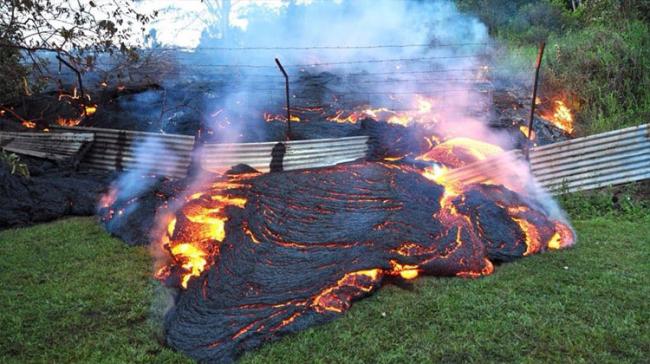Toll From Guatemala Volcanic Eruption Goes Up

Guatemala City: The toll from the eruption of the highly active Fuego volcano in Guatemala has increased to 69 with over 1 million residents affected, according to authorities.
The volcano erupted Sunday, spewing a river of lava and plumes of smoke almost 6 miles into the air. Seventeen of the dead have been identified so far, CNN quoted Guatemala's Institute of Forensic Sciences as saying late Monday.
Fifteen people, including 12 children, have been hospitalised, some of whom suffered severe burns, the Health Ministry said.
Volcanic ash has already stretched across a 12-mile radius, and winds could carry the cloud even farther, officials said.
President Jimmy Morales has declared three days of national mourning.
So far, over 3,100 people have been evacuated and 1.7 million people have been affected by the eruption, according to CONRED, the government agency for disaster reduction.
Satellite footage of Fuego shows the massive dark gray eruption was visible even from space.
Authorities urged residents living near the volcano to evacuate immediately, and warned some in Chimaltenango, Sacatepequez and Escuintla states to watch out for volcanic rocks and ash.
The National Institute of Seismology, Vulcanology, Meteorology and Hydrology on Monday warned that there could be new eruptions, and residents in the surrounding areas should be on alert for mudslides containing volcanic material.
Fuego's eruption is much bigger than Hawaii's Kilauea eruption, which terrorised Big Island on May 3.
Unlike the Hawaii volcano, which has destroyed homes with slow-moving lava, the Fuego volcano unleashed fast-moving pyroclastic flow -- a mix of ash, rock and volcanic gases that can be much more dangerous than lava, CNN reported.
Pyroclastic flows can race down a volcano at hundreds of kilometers per hour -- much faster than people or even cars.
Guatemala is situated on the "Ring of Fire," an area of intense seismic activity.
The 40,000-km area stretches from the boundary of the Pacific Plate and the smaller plates such as the Philippine Sea plate to the Cocos and Nazca Plates that line the edge of the Pacific Ocean.
Volcan de Fuego, which means fire volcano, is one of Central America's most active.
IANS




